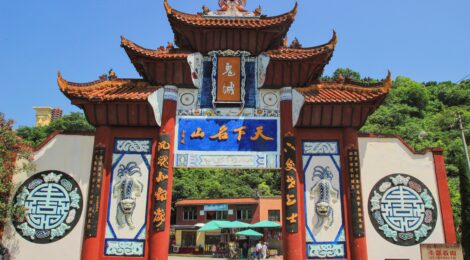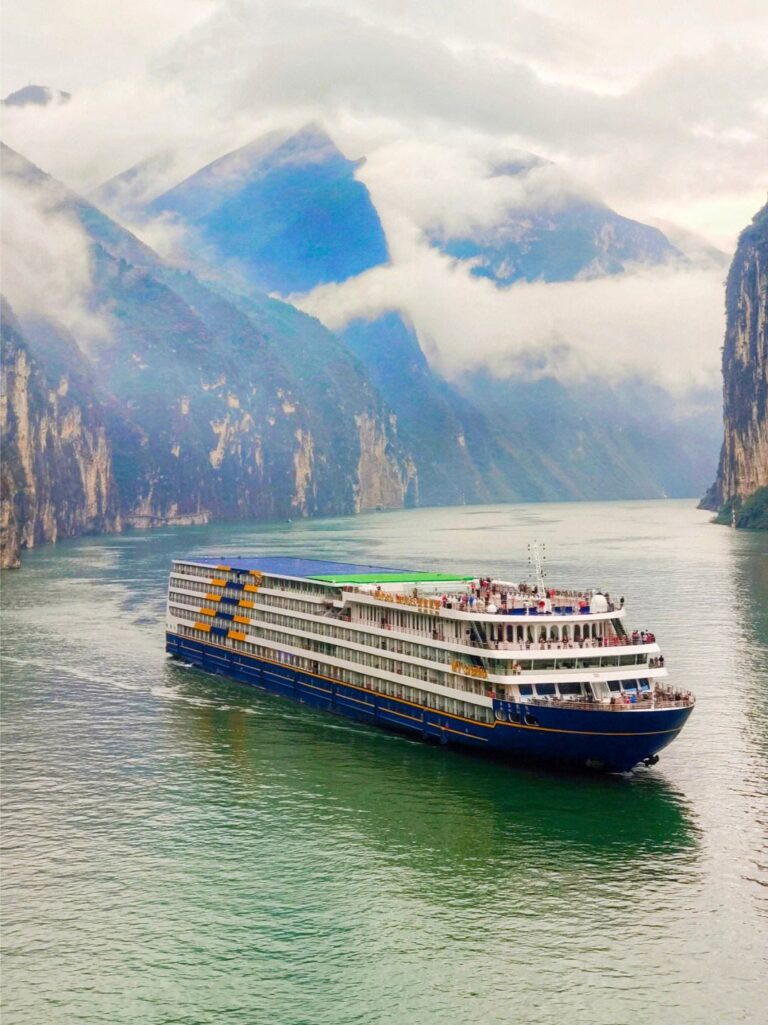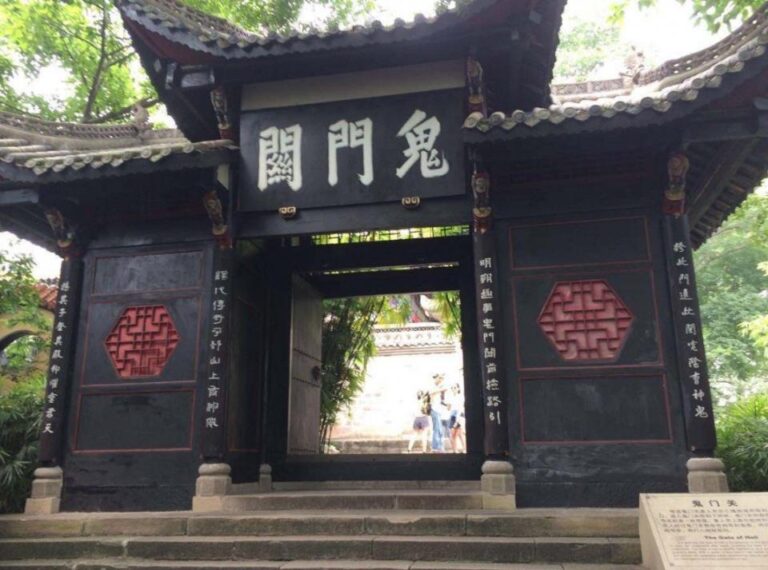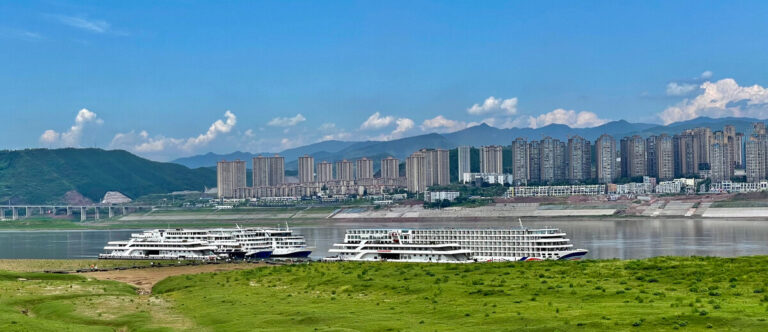
Fengdu, the cultural city of ghosts and gods
Dear readers, have you ever been on a river cruise? In Chongqing, the Yangtze River Cruise can take you to cities on the lower reaches of the Yangtze River including Yichang and Shanghai. Traveling by boat, you can not only enjoy the scenery of the vally area, but also visit cities along the way, which is different from the experience of a cruise ship on the sea. In October when the trees turn golden and the weather is neither too hot or too cold, it’s the perfect time for you to take a curise trip. It only takes six hours from the Chaotianmen dock to the city Fengdu–the representative city of Chinese ghost and spirit culture.

The original name of 丰都 fēng dū was “酆都” (same pronunciation but different character). When premier Zhou Enlai visited Fengdu in 1958, he thought that the character 酆 was difficult to remember and write, so it was changed to “丰”, which means “good harvest”. The oldest Chinese dictionary, Shuo Wen Jie Zi (completed 100-121 AD), included the word “酆” as referring to the capital of King Wen of Zhou (1152 BC – 1056 BC). Later, its meaning gradually changed to specifically refer to the location of the grave, which is related to traditional Chinese mythology and Taoism. The ancient Chinese believed that all things have spirits, the form and spirit of things are divided into “Yin 阴” and “Yang阳”, people live in the “Yang”(the human world) when they are alive, and their souls live in the “Yin”(hell) after death, so the ancestors shaped the hell according to the life and imagination of the human world. For example, the book of Mountains and Seas (written in the Warring States period 770 B.C.-221 B.C.-206 B.C.-220 A.D.) recorded the “ghost country”, which named the “emperor” in charge of all the affairs of the underground world as “Fengdu Emperor”, and set up various grades and official positions to form a complete “underworld.” In line with the simple concept of “good will be rewarded with good and evil will be rewarded with evil”, the ancestors believed that people would be judged in the underworld after death, those who had done evil would stay in purgatory to suffer, and those who had done good would be reincarnated to get a better new life.

According to the records of Fengdu County, at the end of the Eastern Han Dynasty (25-220 AD), Zhang Daoling founded the “Wudoumi Road” and found that the Pingdu Mountain of Fengdu (later the “Ming mountain”) was a Fengshui treasure, so he preached and built Taoist temples there. Fengdu gradually became a Taoist resort.
While in the case of folktales, more widely spread is the story of two immortals: in the Han Dynasty, the great-grandfather of a queenwas named Yin Changsheng, and another scholar-official was named Wang Fangping. Both of them were tired of court politics, resigned from office and became addicted to Taoist cultivation, and finally ascended to heaven in Pingdu Mountain in Fengdu. People took the surnames of these two people to name this place – “Yin”, “Wang” for short, and over time it was misinterpreted as “Yin Wang”, that is, “the king of the underworld”, and their place of cultivation, Fengdu, became the entrance to the underworld. These legends have been passed down by mouth for thousands of years, Buddhism, Taoism, Confucianism and other cultures interwoven here and this place was in the works of literati of various dynasties.

Whether it is an ancient myth without credibility, or a folk rumor passed on by mouth, it is indicated that Fengdu was already under the jurisdiction of the local government as early as two thousand years ago. From the historical perspective, Fengdu originally belonged to the State of Ba, and the Qin Dynasty unified China. Then, in the second year of Yongyuan (AD 90) of Emperor Han and Emperor Han Dynasty, Pingdu County was divided, which was the beginning of the construction of Fengdu County. During the construction of the Three Gorges Dam in the 1990s, cultural security staff carried out rescue excavations of more than 1,000 ancient tombs from the Han Dynasty to the Six Dynasties (AD 222 – AD 589) in Fengdu, with a total area of about 35,000 square meters, which indicates that Fengdu had a large population living in the area at that time, and social and economic activities were very rich.

Unfortunately, with the construction of the Three Gorges Dam, historical sites such as Tomb clusters and Fengdu Old Town (278 meters above sea level) were submerged by the Yangtze River, which rose tens of meters. The prosperous and modern new city is located on the south bank of the Yangtze River, at an altitude of 550 meters, across the river from the old county town on the north bank.

The Ming mountains on the north bank located one of Chongqing’s first 4A level tourist area- “Fengdu Ghost Town Ming Mountain Scenic spot”, where you can directly feel the ghost culture, such as the Helpless Bridge, the Gate of Death, Huangquan Road (road to the death)c, the Eighteenth Floor of Hell, Tianzi Hall and other unique buildings.



